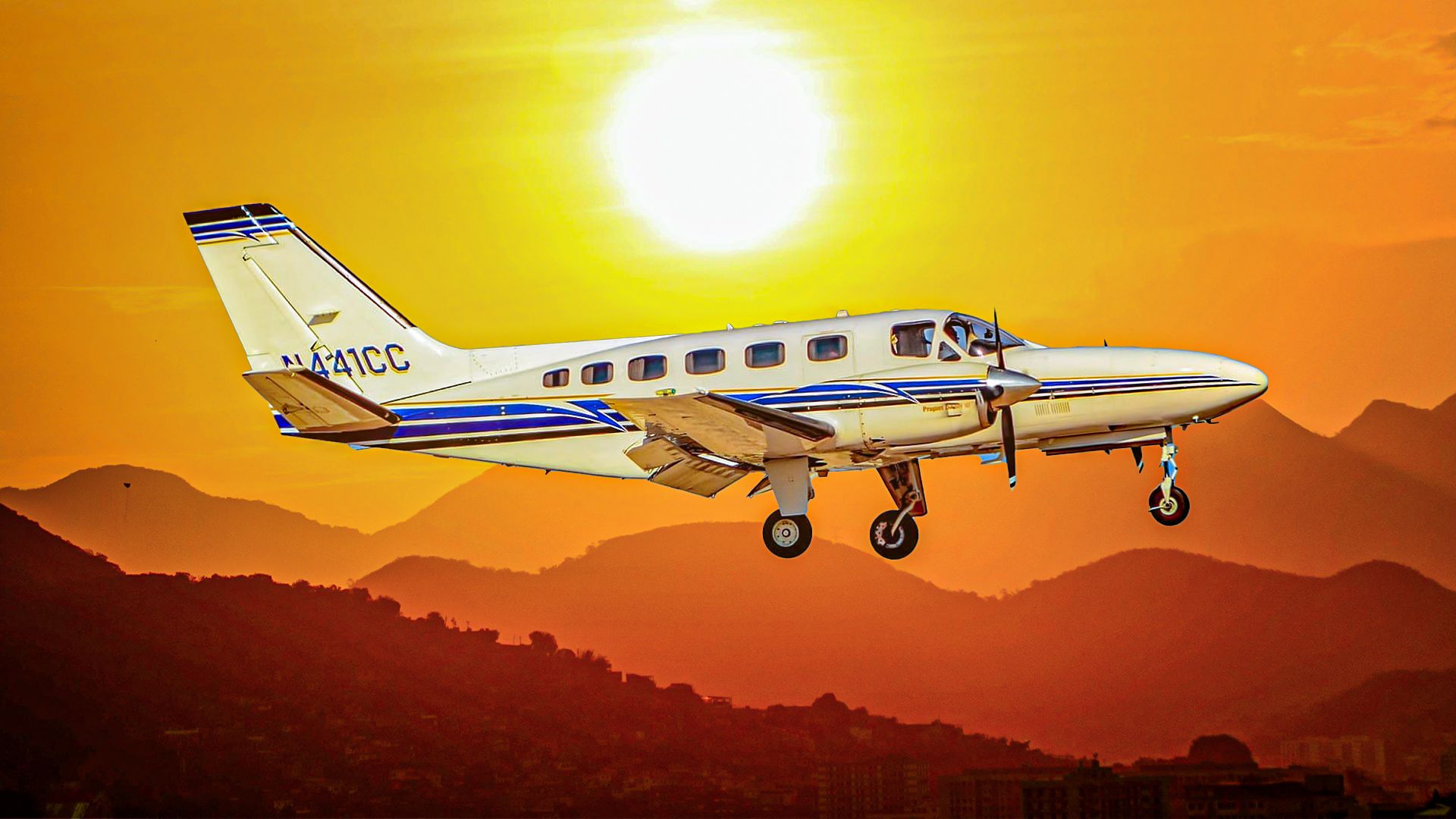Summary
- Fleet grounded twice due to the slim tail design issues, necessitating a redesign.
- Redesigned tail added weight, strength, and reliability to the aircraft.
- Cessna 441 Conquest’s efficiency, extended engine maintenance intervals, and high-altitude performance made it a versatile choice for operators.
The Cessna 441 Conquest is the first turboprop-powered aircraft designed by Cessna. Developed in the mid-1970s, the first pressurized cabin aircraft was delivered in September 1977. The type is known for its versatility in a wide range of applications. A total of 362 examples were built between 1977 and 1986.
1
Grounding of fleet
The entire fleet was grounded twice
- Passenger capacity | 8-11 seats
- Fuselage Length | 39 ft
- Fuselage Height | 13 ft 1 in
- Wingspan | 49 ft 4 in
- Powerplants | Two Honeywell TPE-331-10N
The Federal Aviation Administration (FAA) grounded the entire fleet of Cessna 441 Conquest’s due to poor design and malfunctioning in the tail features of the aircraft. The aircraft’s slim tail failed multiple times during operations, forcing the FAA to take serious action.
The manufacturer redesigned the entire tail geometry to increase its thickness, which also added weight to the aircraft and strengthened the core. Following a series of rigorous tests, Cessna retrofitted the existing fleet with the new tail design, eliminating any potential failures due to its design. The design has since matured and has become popular for its speed and range.

Related
Twin Engined Cessna Turboprop: 5 Unique Features Of The Cessna 441 Conquest II
Despite the last example being built over 40 years ago, the Cessna 441 Conquest II is still regarded as one of the company’s best turboprops.
2
A tremendous range
Operational range: 2,200 NM (2,530 miles, 4,050 km)
- Maximum takeoff weight | 10,165 lb
- Takeoff distance over a 50-foot obstacle (sea level) | 2,465 ft
- Maximum cruise speed (~10 engines) | 310 kt
One of the greatest selling points of the Cessna 441 Conquest was its operational range of 2,200 NM (2,530 miles, 4,050 km), enabling utmost flexibility for operators. Whether it is corporate flights or humanitarian missions, operators benefit from its range.
Photo: John Nairne | Shutterstock
According to the AOPA,
“With such tremendous range, the Conquest II gives many jets a run for their money on long trips, since some jets will have to make a fuel stop. If cabin load doesn’t dictate otherwise, lots of cheap fuel can be carried into airports where fuel is pricey, saving an owner thousands. Not stopping is also a boon for overall safety and reduces cycles on all components.”

Related
The Most Successful Aircraft In History: A Look At The Cessna 172
It was an overnight sales success and is still being produced today.
3
A range of operators
The Cessna 441 was operated by nearly 15 countries
- Austria
- Australia
- Canada
- Ecuador
- Finland
- Germany
- Iceland
- Mexico
- Norway
- Peru
- South Africa
- Sweden
- United Kingdom
Whether it was an independent owner, an air charter operation, or a specialized mobility service, a Cessna 441 Conquest was there to help. Many corporate owners utilized the aircraft for its flexibility and versatility. The Royal Flying Doctor Service (RFDS) in Australia also operated a fleet of 441 Conquest IIs.
The non-profit organization provides emergency and primary care services in many remote and rural areas of Australia. The highly versatile and capable Cessna 441 Conquest II aircraft addresses people in extremely remote areas who cannot access a hospital.

Related
5 Unique Features Of A Cessna Citation Interior
These American business jets have some tricks in their interiors.
4
Extendable engine maintenance intervals
Time between overhauls can be extended to over 7,000 hours
- Powerplant: 2x Garrett TPE331-8-403S turboprop engines
- Power per engine: 636 shaft horsepower (474 kW)
- Propellers: 4-bladed McCauley
The Cessna 441 Conquest is powered by the highly efficient Garrett TPE331 turboprop engines, which, if enrolled, enable the use of extended hours and overhauls. To increase the conventional 5,400 hours between overhauls, owners or companies must enroll in a specific engine maintenance plan.
Photo: Austin Deppe | Shutterstock
The maintenance, inspection, and overhaul plan allows customers to keep their engines flying longer, followed by a thorough overhaul. The engine is usually dismantled at a piece-part level during an overhaul, requiring approximately three months of off-wing time. While the maintenance period must sound long, the engine performance is significantly enhanced when on the wing.

Related
The 5 Different Cessna 206 Variants
Cessna introduced several variants and subvariants of the iconic 206 aircraft.
5
High-altitude performance capabilities
The aircraft could exceed 310 knots at 35,000 ft
- Conventional Vertical Separation Standards: 2,000 ft vertical (FL290 to FL410)
- Reduced Vertical Separation Minimum (RVSM): 1,000 vertical (FL290 to FL410)
Despite the criticism that the Cessna 441 Conquest had a weak pressurization system (of approximately 10,900 ft at a service ceiling of 35,000 ft), it showed tremendous fuel efficiency and flight performance during high-altitude cruise. With a small quantity of usable fuel, it could travel distances. The later models were approved for 35,000 ft.
Photo: Simple Flying
According to AOPA,
“Because of its altitude capabilities, many owners have opted for reduced vertical separation minimum (RVSM) approval rather than be capped at FL280. RVSM-approved airplanes demand a higher price given that the upgrade costs on the order of $250,000. Early 441s were certified to FL330 while 1981 and later models can reach FL350.”

Related
Single Engine Pistons: A Look At The Currently Produced Cessna Single Engine Aircraft
Textron Aviation currently produces four Cessna single-engine piston aircraft.
What are your thoughts on the unique facts about the Cessna 441 Conquest? Share your views in the comments section.






